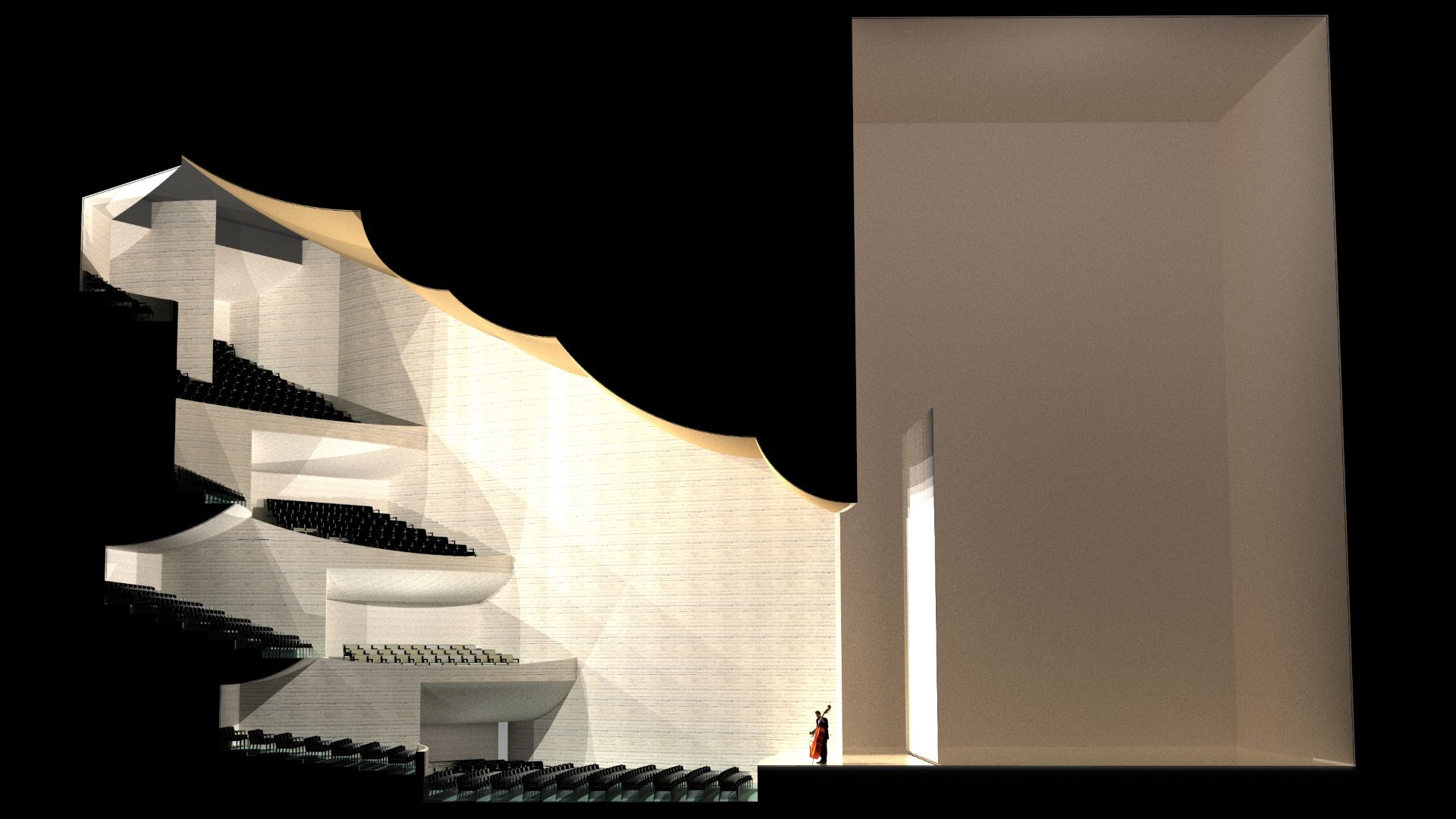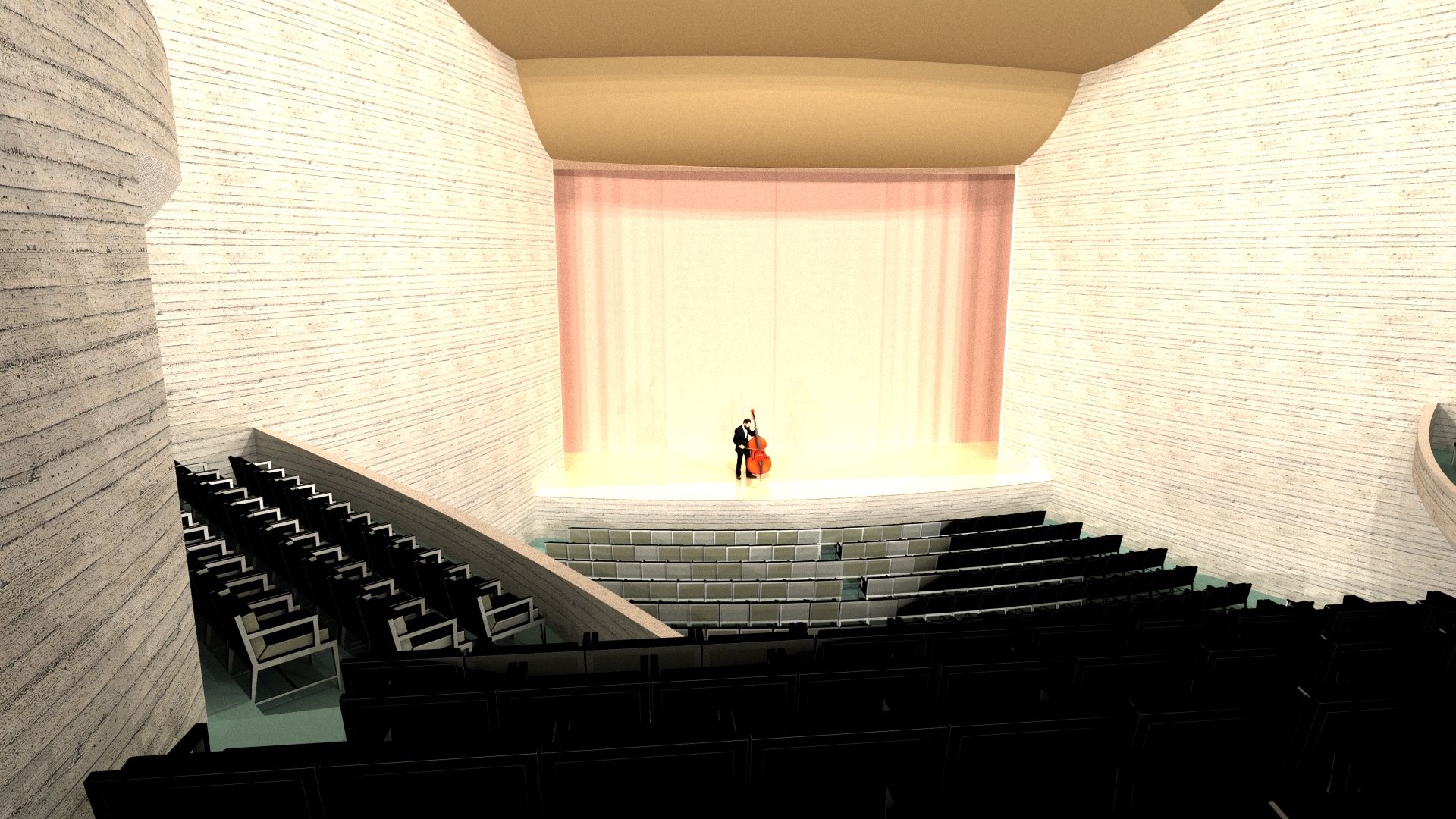
Vineyard Concert Hall Algorithm
- No location
Sound and space are tightly linked together, with one affecting the other. When designing a space optimized for sound, careful consideration needs to be given to the room's volume and shape, material assemblies, building systems, and relationship between listeners and the sounds they are listening to.
This project develops an algorithm that starts with the relationship between performer and audience, and constructs a space around this architecture based on desired acoustic properties and audience size. At 1200 seats, the result is a vineyard-style auditorium that keeps all listeners within a minimum distance of the performers while maintaining a signature sense of envelopment.

Sense of space
The architecture of a space is the key determinant of how a space sounds. As sound emanates from its source, is reflected, diffused, and absorbed by the room's surfaces as it decays. We perceive this decay of sound as the "acoustics" of a space.
We shape the architecture of a room to get a desirable decay, Important acoustic properties of a room, such as envelopment, depend heavily on the direction from which the sound is perceived relative to the source. While the sense of space created by the way that sound decays is crucial to both our sense of space and our perception of acoustic quality.

Sample impulse response. Acoustic properties can be derived from this data.
The graph of this decay is referred to as an impulse response. International engineering standards define exactly how different acoustic properties of the room are calculated from this impulse response. These metrics help us quantify the properties we are looking for. Spatialized room measurements are something of an emerging field,

Algorithm constraints for generating form
This algorithm uses the constraints of the decay of sound (here quantified by the multiplier of the number of

Concert Hall plan/section
This algorithm uses the constraints of the decay of sound (here quantified by the multiplier of

Section perspective showing resulting theater form

View from stage

View from audience area